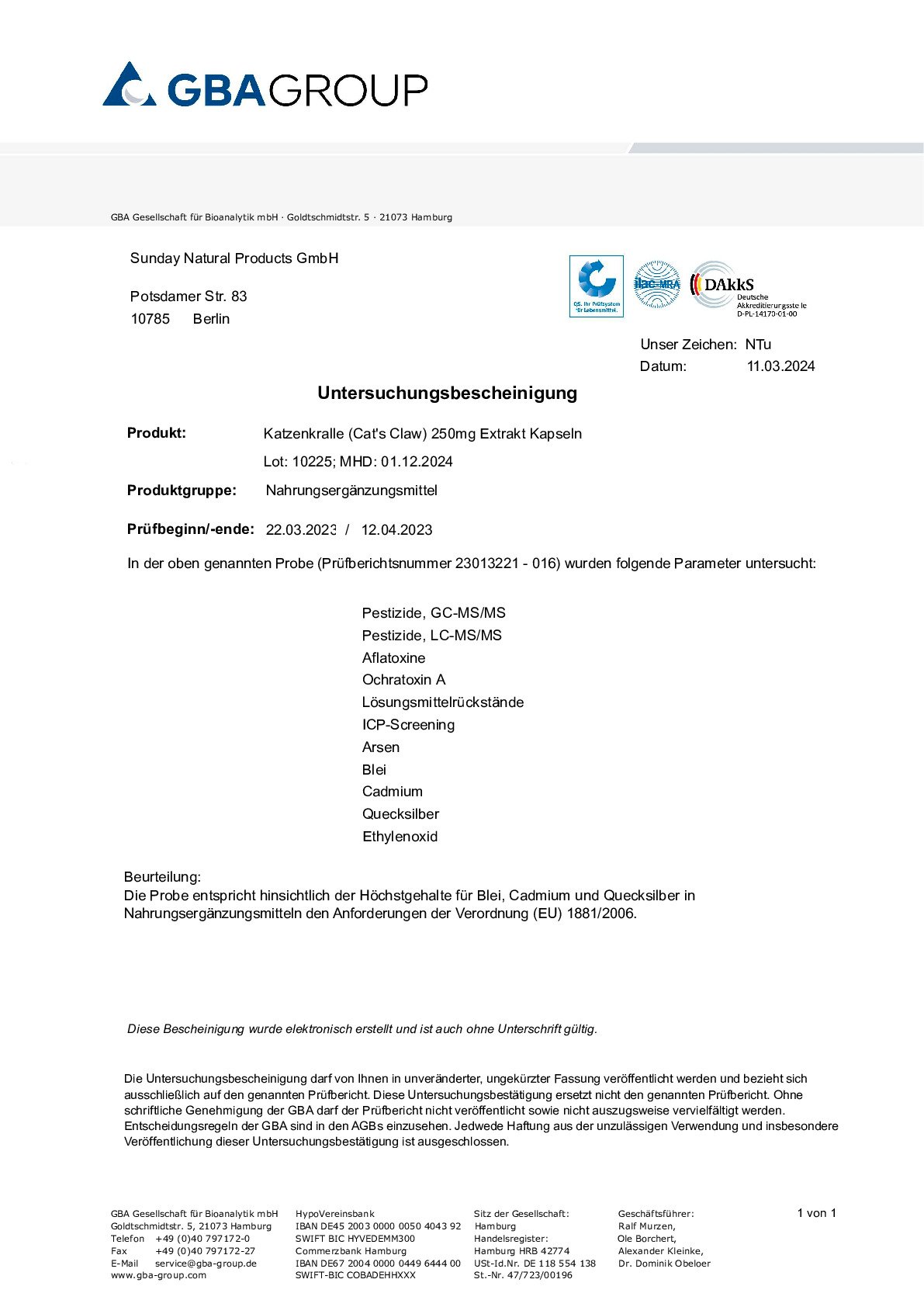Cat's claw (Uncaria tomentosa) is a liana plant native to the Amazon region. It owes its name to an old legend of the Asháninka people in which the plant's thorns are compared to the claws of a cat. In 1994, it was officially recognised by the WHO as a medicinal plant. It contains penta- and tetracyclic oxindole alkaloids (POA) as well as antioxidants such as quinones, terpenoids (especially quinovic acid glycosides), sterols, flavonoids (procyanidins, epicatechin and quinconaine) and beta-carotene (provitamin A). The bark of cat's claw is particularly rich in alkaloids.
References
1. Abolanle O. Kalejaiye. Pharmacology and therapeutic uses of cat’s claw. Altern Ther. 1. June 2009;(Vol 66)
2. Sandoval M, Okuhama NN, Zhang XJ et al. Anti-inflammatory and antioxidant activities of cat’s claw. Phytomedicine. 2002; 9:325-37.
3. Keplinger K, Laus G, Wurm M et al. Uncaria tomentosa (Willd.) DC. Ethnomedicinal use and new pharmacological, toxicological and botanical results. J Ethnopharmacol. 1999; 64:23-34.



















